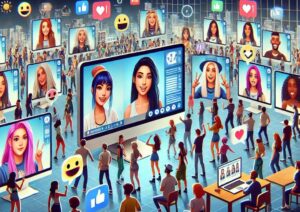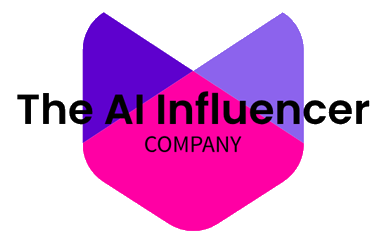Fashion brands live and die by their ability to react to the ever-changing tastes of consumers. Spotting trends early allows companies to develop on-trend products in sync with customer demand. Getting it wrong means inventory write-downs and missed sales. For shoppers, knowing upcoming styles means less risk in purchases and a wardrobe that feels fresh.
In the past, fashion forecasters relied on intuition and industry knowledge to predict trends. However, this approach has major limitations. With AI and big data, fashion brands now have a modern tool kit to forecast trends with precision.
How AI Is Revolutionizing Fashion Trend Forecasting
Accurate forecasting requires analyzing data – tons of it. AI algorithms excel at detecting subtle patterns in huge data sets. By applying machine learning to abundant fashion and consumer data, AI systems can identify trends faster and more dependable than humans.
Key data sources fueling AI fashion forecasting include:
- Point of sale data – past sales statistics reveal growing or declining styles.
- Social listening data – mining consumer sentiment and engagement on social platforms.
- Consumer surveys – direct feedback on fashion preferences and purchase intent.
- Street style images – visually detecting emerging styles from real-world photos.
- Fashion show imagery – tracking colors, silhouettes, and details from the runway.
By processing this data, AI algorithms can detect nascent trends as they first emerge. The systems also continuously update forecasts as new data appears. This enables remarkably rapid reaction times for brands.
AI-based forecasts deliver not just what styles will trend, but how strongly they will trend. This granular perspective allows brands to optimize product assortments and inventory planning with precision.
Key Benefits of AI-Based Fashion Forecasting
Adopting AI fashion forecasting provides many advantages across the value chain. Implementing AI fashion forecasting provides significant benefits across the industry. Brands gain major competitive advantages by leveraging advanced algorithms to analyze massive datasets.
- The data-driven insights enabled by AI allow fashion companies to understand trends, consumer demand, and market dynamics better than ever before. This empowers more strategic product development, streamlined operations, and data-backed decision-making. Major benefits include:
- Faster reaction to upcoming trends – AI detects budding trends as they emerge. This allows brands to reach the market faster with on-trend products.
- Reduced inventory risks and costs – Precise demand predictions allow brands to optimize inventory and production. This decreases write-downs and stockouts. For example, Walmart uses AI to forecast optimal selections for each store.
- Deliver what customers want – Aligning products with forecasted trends satisfies consumer demand. Shoppers get styles they want to buy, increasing sales and satisfaction.
- Streamline design workflows – With earlier forecasts, brands can refine concepts and begin sampling sooner. This accelerates the product development process.
- More tailored collections – Granular data provides insights to tailor product selections for specific groups. This helps brands serve diverse customers better.
Applications of AI Trend Forecasting for Brands
The future-facing insights produced by AI fashion forecasting can inform myriad strategic decisions for brands across product development, merchandising, and planning.
AI enables companies to enhance processes by providing data-backed visibility into upcoming trends and consumer demand. Key applications of AI predictive intelligence include:
- Inform design concepts and material buying – Trend analysis identifies upcoming colors, fabrics, silhouettes, and styles to inspire designs. For example, athletic brand Puma uses AI to guide its designers.
- Optimize product assortment planning – Precise demand forecasts enable brands to plan product mixes and breadth tailored to each market. Fast fashion retailer H&M uses AI to optimize assortments.
- Enhance merchandise financial planning – AI identifies not just the hottest trends but those with the most monetizable demand. This steers production to maximize sales revenue.
- Refine pricing and promotion strategies – Demand predictions inform optimal pricing and help brands gauge promotional sensitivity. Adidas uses AI to dynamically adjust pricing.
Applications for Consumers and Shoppers
While AI fashion forecasting provides powerful backend insights for brands, it also enables a better consumer experience for everyday shoppers. By leveraging data to predict trends aligned with individual tastes, AI allows retailers to provide tailored recommendations to each customer.
Consumers can discover emerging styles likely to resonate with their preferences before mainstream adoption. The applications bringing the predictive power of AI forecasting directly to shoppers include:
- Personalized trend recommendations – Retailers can suggest on-trend items aligned with an individual’s style based on their purchase history and browsing. For example, Stitch Fix uses AI to curate trending products for clients.
- Discover emerging styles first – Before trends go mainstream, consumers can get exposed to early-adopter styles suited to their tastes. Apps like GlamPal take your style quiz and suggest upcoming items you will love.
- Reduce purchase risk and dissatisfaction – Knowing upcoming trends helps shoppers avoid impulse buys that quickly feel outdated. Purchases feel on-point with forecasted styles aligned to personal preferences.
- AI-powered virtual stylists – Apps like Snapchat and Instagram provide automated outfit recommendations combining trending styles and colors. Users can digitally “try on” clothes identified by AI tools.
Challenges and Limitations of AI Fashion Forecasting
The technology also has limitations despite significant advantages. Like any modeling and prediction system, the quality of the data inputs and algorithms determines the reliability of the outputs. Real-world complexities like unexpected events or biased data can undermine AI forecasts.
As the technology continues maturing, improving aspects like flexible models and representative data will increase predictive accuracy. But it’s important to understand current challenges, which include:
- Lack of flexibility for unexpected events – Statistical models react poorly to unforeseen events like COVID-19 that disrupt fashion trends. Human oversight is still required.
- Reliance on quality data – AI is only as good as its data inputs. Incomplete or biased data leads to skewed forecasts. For instance, Streetbees uses human intelligence to enrich its AI fashion forecasting data.
- Bias and skew – If past data has demographic or geographic biases, forecasts will simply project those biases forward. Brands must ensure diverse representation within training data.
- Data labeling and annotation – Machine learning depends on labeling product images, social media, and other data. Poor human labeling can undermine results and perpetuate bias. Ongoing auditing helps.
The Future of AI and Fashion Trends
AI fashion forecasting will continue advancing hand-in-hand with the tech:
- Growing scope of AI applications across the fashion value chain like demand planning, pricing, and visual search.
- Ongoing improvements in prediction accuracy as algorithms access more training data.
- Evolution of “digital-only” clothing created using virtual design platforms and sold for online use.
- Movement towards more sustainable production with less overproduction and waste guided by demand forecasts.
For both brands and shoppers, AI represents an exciting new frontier in understanding fashion’s whims. The data-driven insights unlocked by AI algorithms promise to bring a new level of speed, precision, and responsiveness to the ever-evolving fashion industry.
While human creativity and intuition remain irreplaceable, AI is the perfect partner to augment the human forecaster’s skills. Together, they will unravel fashion’s next big mystery: what is the world going to want to wear next?
Final Thoughts
AI fashion forecasting delivers unmatched insights into upcoming trends today. But the world is changing rapidly. How can brands stay agile for fashion’s unpredictable future?
While AI identifies probable trends, creative humans must still filter those possibilities into appealing new designs. Forecasts are a guide, not a crutch.
Rising concerns around sustainability and overproduction present new dilemmas. Smart forecasting should minimize waste, not maximize output. More than just chasing trends, brands need a conscience.
AI also cannot foresee shocks like pandemics that violently disrupt normal cycles. But augmented intelligence with humans in the loop can adapt more gracefully.
The only true certainty is uncertainty. As AI forecasting continues advancing, fashion brands must temper their predictive power with human creativity, wisdom and resilience.




